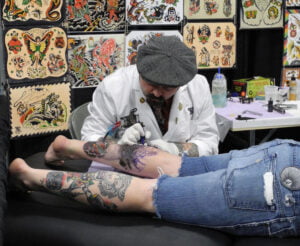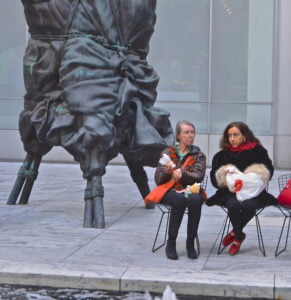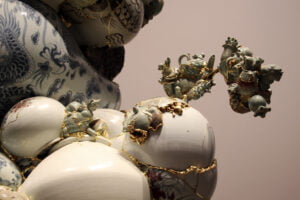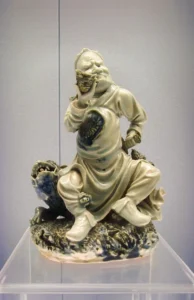The Illusion of Constant Creativity
One of the most pervasive myths about artists is that they’re always brimming with creativity, effortlessly producing masterpiece after masterpiece. Social media feeds into this illusion by showcasing finished works, studio shots, and snippets of the creative process that highlight productivity and inspiration. What’s rarely shown are the hours of self-doubt, the creative blocks, and the countless unfinished projects.
Artist Chloe Martinez shares, “I post a lot of my work online, but what people don’t see are the days when I’m staring at a blank canvas, feeling completely uninspired. It’s part of the process, but it doesn’t make for good content.” This selective sharing creates the impression of unending creativity, masking the more mundane aspects of the artistic journey.
The Glamorous Studio Myth
Another common trope is the luxurious, sun-drenched studio filled with high-end supplies and decorated to perfection. While some artists do have beautiful workspaces, many more are working out of small apartments, makeshift studios, or shared spaces. The reality often involves clutter, lack of space, and the constant juggle of multiple jobs to afford basic materials.
Photographer Jake Thompson admits, “I’ve taken photos in my tiny apartment that make it look like a professional studio. It’s all about angles and lighting. The reality is, I’m working in a cramped space with barely enough room for my equipment.”
The Illusion of Financial Success
Artists are often depicted as financially successful, living comfortably off their work. However, the reality for many is a constant struggle to make ends meet. The gig economy, inconsistent income, and the high cost of living in cities where art scenes thrive can make financial stability elusive.
One way artists maintain the illusion of financial success is by showcasing high-profile projects or sales. A single successful exhibition or commission can create the impression of continuous success, even if it’s an isolated event. Additionally, collaborations and sponsorships can give an artist’s lifestyle a veneer of affluence.
The Networking Facade
Networking is crucial in the art world, and social media often highlights artists attending glamorous events, mingling with influential figures, and being part of an exclusive community. These images can create a sense of FOMO (fear of missing out) among followers and fellow artists.
However, the truth is that networking often involves a lot of behind-the-scenes work, awkward interactions, and events that are more about showing face than genuine connections. “I post photos from gallery openings and parties, but what I don’t share are the nights I’m home working late or the awkward moments when I feel out of place,” says painter Laura Greene.
The Perfect Life Illusion
Beyond their professional achievements, artists often project an image of a perfect personal life. This includes idyllic vacations, stylish homes, and a seamless blend of work and leisure. These posts are carefully crafted to highlight the best moments, often leaving out the struggles and sacrifices that come with pursuing a creative career.
Writer Sam Collins reveals, “I love sharing photos from my travels, but what’s not visible is the credit card debt and the stress of balancing freelance gigs to afford those trips. It’s a trade-off I make for my art, but it’s far from the carefree lifestyle it appears to be.”
The Role of Social Media
Social media plays a significant role in perpetuating these myths. Platforms like Instagram and TikTok are built around visual content, encouraging users to present the most attractive, engaging aspects of their lives. For artists, this means highlighting successes and aesthetic moments while downplaying or omitting the struggles.
The pressure to maintain an image of success can be intense. Social media algorithms favor consistent, high-quality content, which can drive artists to constantly produce and post, often at the expense of their well-being. The need to appear successful can lead to burnout and a disconnect between an artist’s public persona and their private reality.
The Impact on Mental Health
Maintaining the illusion of the good life can take a toll on artists’ mental health. The gap between public perception and personal experience can lead to feelings of inadequacy, anxiety, and isolation. Comparing themselves to the seemingly perfect lives of others can exacerbate these issues.
“It’s easy to fall into the trap of comparing yourself to other artists online,” says sculptor Nina Lopez. “Seeing their success can make you feel like you’re not doing enough, even if you know it’s just a highlight reel. It’s important to remind yourself that everyone’s journey is different.”
Authenticity V.S Perception
While projecting an image of success can be beneficial for building a brand and attracting opportunities, there’s also a growing movement towards authenticity. Many artists are beginning to share the less glamorous aspects of their lives, offering a more balanced view of what it means to pursue a creative career.
By being open about their struggles, artists can foster a sense of community and support. Sharing the highs and lows helps demystify the creative process and reminds others that they’re not alone in their challenges. It’s a shift that encourages genuine connections over curated perfection.
The Reality Check
The next time you find yourself scrolling through an artist’s seemingly perfect feed, remember that social media is a curated platform. Behind every polished post, there’s likely a story of hard work, sacrifice, and perseverance. The illusion of the good life is just that—an illusion.
Artists, like everyone else, face challenges and setbacks. Their success is often the result of relentless effort, resilience, and a willingness to take risks. By recognizing the reality behind the facade, we can appreciate their work even more and find inspiration in their dedication and passion.
Conclusion: Embracing the Real
In the end, the notion that artists are always living the good life is a myth perpetuated by social media and selective sharing. While the curated images of success can be inspiring, it’s essential to acknowledge the hard work and struggles that lie beneath the surface.
By embracing authenticity and sharing the full spectrum of their experiences, artists can create a more realistic and relatable image of what it means to live a creative life. This honesty not only helps to build a more supportive community but also encourages aspiring artists to pursue their dreams without being misled by unrealistic expectations.
So, the next time you see a post from an artist showcasing their seemingly perfect life, take a moment to appreciate the real story behind it. The good life is a mix of triumphs and trials, and it’s the journey, with all its ups and downs, that truly defines the creative experience.












